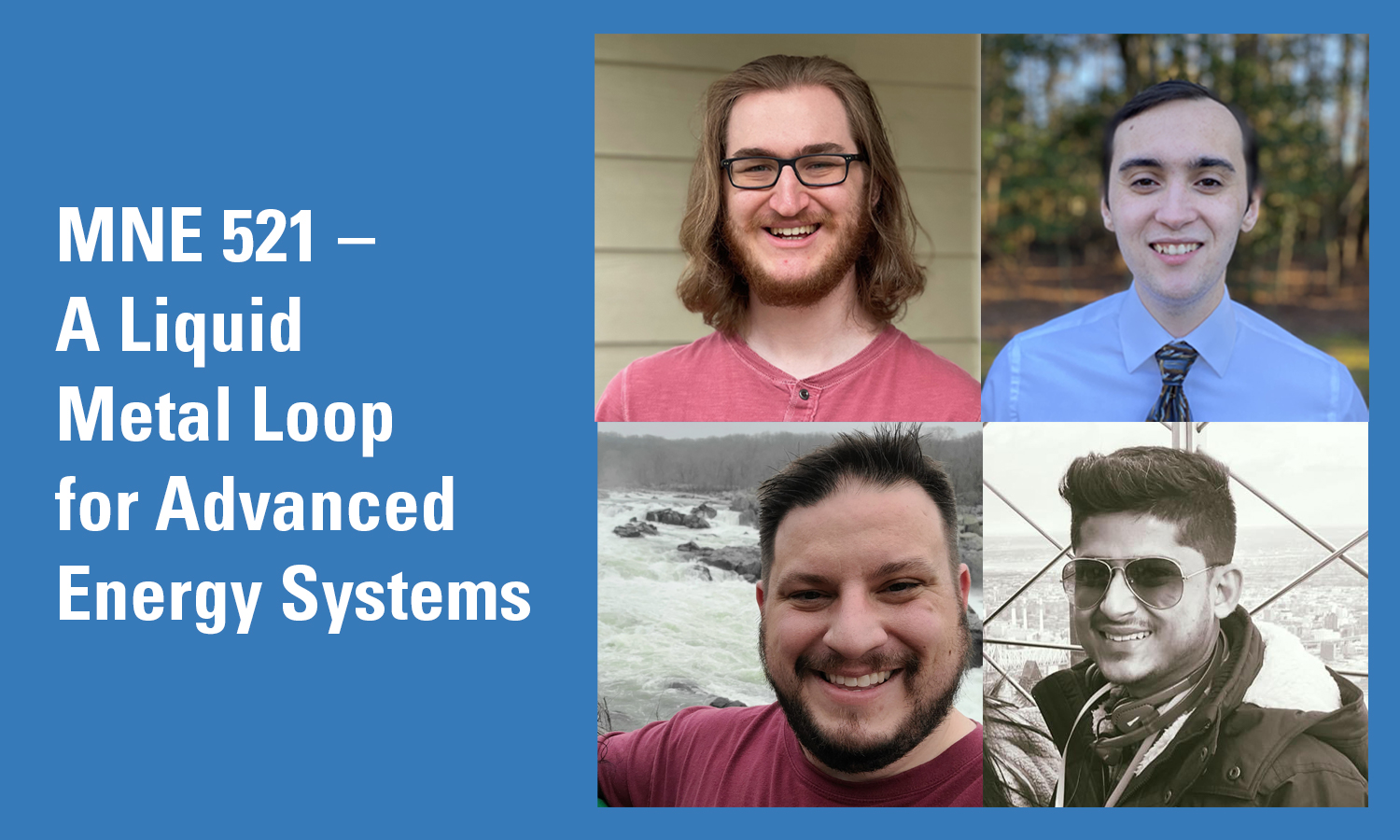Capstone Spotlight MNE 521 – A Liquid Metal Loop for Advanced Energy Systems

| Team | Advisers | Client |
| Davis Bryars Richard Easter Graham Johnson Umair Shallwani | Lane Carasik, Ph.D., assistant professor | VCU College of Engineering |
Project Title: Scale-up of a Liquid Metal Loop for Heat Transfer and Fluid Experiments to Support Advanced Energy Systems Deployment
What it is, in a nutshell
A liquid metal flow loop for a heat exchanger that will aid in the development of new clean energy systems.
What it is, in a slightly bigger shell
A flow loop for use in a testbed to assess the properties of liquid metal as a medium for heat transfer to produce new energy. It comprises an adjustable test section that allows other flow components to be added to the loop. This project offers a way to test the heat-transfer properties of liquid metal and investigate how loop design can capitalize on those properties for more efficient energy production.
Why it needs to exist
Clean energy systems including solar and nuclear systems transfer heat to steam generators to produce power. To meet clean energy production goals, there is an increasing need for heat transfer methods that can operate at higher temperatures and lower pressures than current water-cooled heat transfer methods allow. Liquid metal heat transfers meet this need. This scale-up of a liquid metal loop offers detailed analysis of liquid tin’s thermohydraulic properties. It also investigates how those properties react to different flow loop designs.
What they’re working on right now
Now that the Expo materials are finished, they are finalizing the design report and collecting notes, research, calculations and drawings to hand off to a future Capstone team.
The biggest challenge so far
“Without the ability to do hands-on, in-person construction and testing, we had to use our finely honed engineering judgment to make some key assumptions about the behavior of molten tin in a loop such as this,” said team member Davis Bryars.
Their goal by the end of the year
To produce a complete analysis of the current design as accurately as possible, so the future Capstone team that continues this project can construct a working prototype once in-person work resumes.
What they wish they had known earlier
If they could do it all over again, team members said they would generate graphs and computational predictions using Python or MATLAB instead of Excel. “When starting out, we didn’t have a full appreciation for the scope and depth of this project, and Excel eventually became inefficient,” Bryars said.
